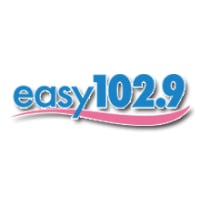Opioid use disorder (OUD) is a treatable but potentially life-threatening condition. Yet millions of people still lack access to the most effective treatment options. According to recently released data from the Centers for Disease Control and Prevention (CDC), medications for OUD, especially buprenorphine and methadone, can significantly reduce the risk of overdose and improve long-term health outcomes. Despite this, medication-assisted treatment (MAT) remains widely underused.
In 2022, an estimated 9.4 million U.S. adults needed treatment for OUD, but only one in four (25.1%) received evidence-based MAT, according to the CDC. Nearly half (42.7%) didn't even perceive a need for treatment, which highlights how misinformation, stigma, and systemic barriers continue to shape access to care.
Access to MAT is also far from equitable. CDC data shows that white adults are more likely to receive these medications than Black or Hispanic adults, and men are more likely to access them than women. Adults aged 35-49 had higher rates of medication use than their younger or older peers.
The disparities go deeper: People with lower incomes, those who are unemployed, and individuals involved in the criminal legal system had the highest need for OUD treatment. At the same time, they were among the least likely to receive medication-based care, according to the CDC. These gaps underscore the urgent need for more equitable, accessible MAT programs.
To better understand the treatment gap, Charlie Health examined the latest research on medications for opioid use disorder (MOUD), including how they work, who they reach, and who's still being left behind.
Non-medication treatment for OUD is more common despite being less effective
CDC data shows that in 2022, nearly one-third of people with OUD (30%) received treatment without medication—an approach used more often than MAT, even though it's less effective at lowering the risk of overdose. Encouragingly, individuals with severe OUD were significantly more likely to receive medication-based treatment than those with mild or moderate cases, according to a 2021 national study.
MAT is safe even for people with other health conditions
Concerns about medication safety sometimes prevent people or providers from pursuing MAT. But data consistently shows that MAT is safe, even for people with co-occurring physical health issues. A 2024 study found no increase in ER visits or hospitalizations among people with congestive heart failure who received MAT, supporting its safety across populations with different conditions.
Rural pilot programs show that MAT works across regions
Expanding access to MAT in rural areas can be life-changing for those with OUD, especially since people struggling with opioid addiction in rural areas face disproportionate barriers to care. A 2022 study of a Colorado pilot program—which trained 15 new providers and delivered care to more than 1,000 patients—found that, after six months, participants reported reduced opioid, heroin, and alcohol use, along with better physical and mental health. Symptoms of depression, anxiety, and pain all decreased.
Expanding MAT can reduce costs and save lives
Programs that make MAT more accessible don't just improve health outcomes; they also reduce healthcare costs. In Vermont, Medicaid beneficiaries enrolled in the state's "Hub & Spoke" program (which expanded access to MAT) had lower ER use and fewer hospitalizations than those who received treatment without medication, research shows. These findings support policy approaches that invest in MAT for OUD not just as a clinical best practice but as a cost-saving public health strategy.
Telehealth may significantly improve access to MAT
The national study conducted in 2021 found that people who accessed care via telehealth were 38 times more likely to receive MAT for OUD than those who didn't. This suggests that virtual care can play a critical role in overcoming geographic or logistical barriers, especially for people in rural or underserved areas.
This story was produced by Charlie Health and reviewed and distributed by Stacker.


